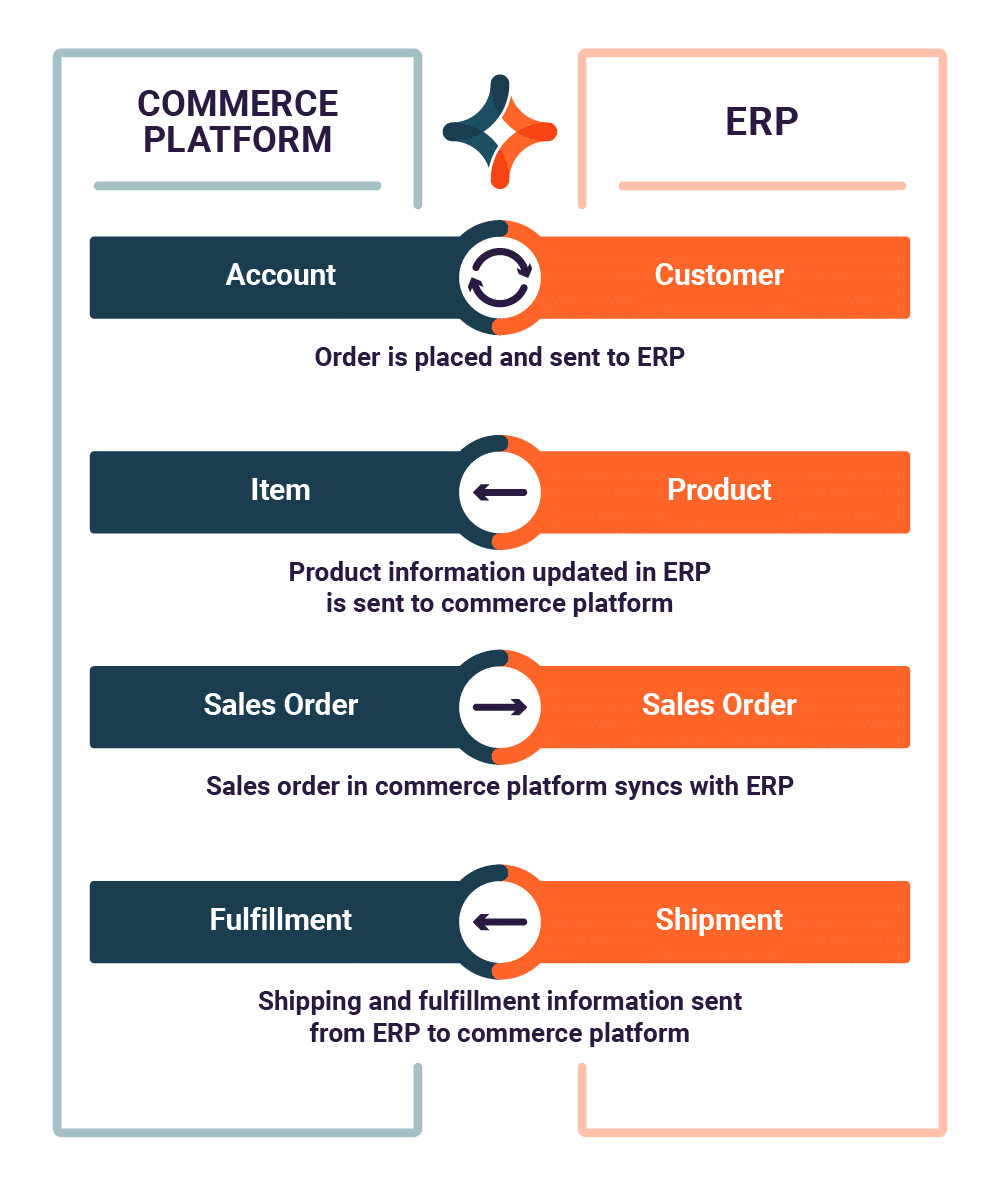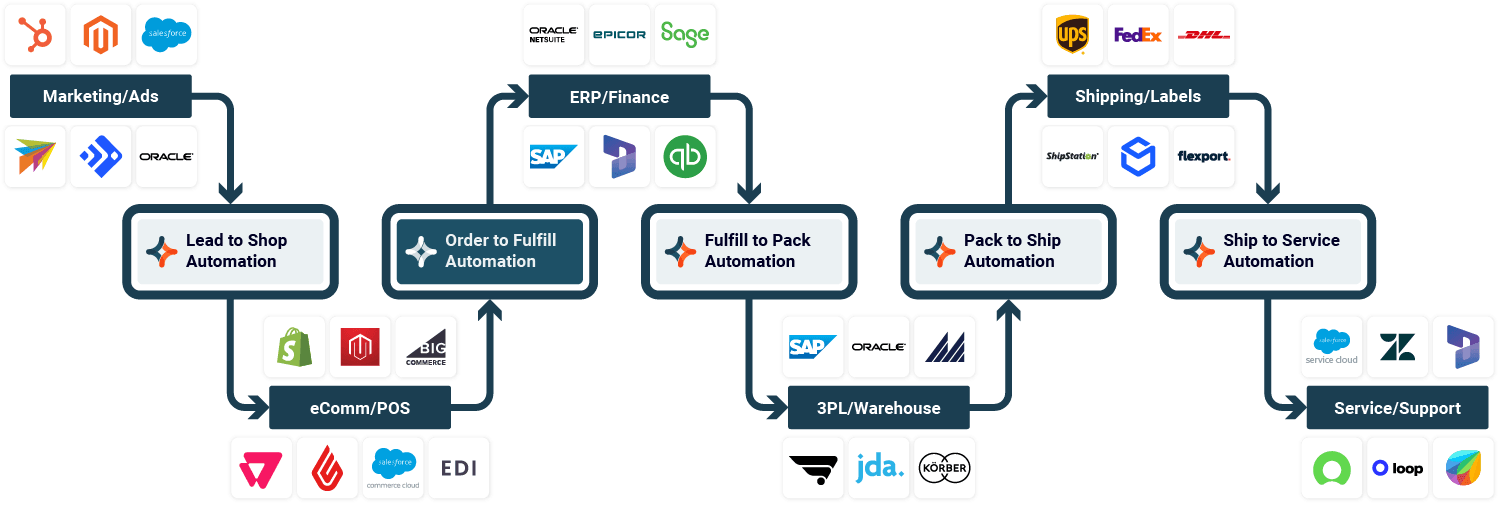By David Rastatter, Senior Director, Product Marketing
How data integration improves commerce workflows, with a look at 5 ways to automate order to fulfillment activities.
Consumers demand more speed and convenience in the buying process than ever before. In a world with thousands of options just a few clicks away, businesses must deliver superior experiences to make a meaningful impact with customers – or risk losing business.
Without the right technology in place, receiving an order, ensuring the accuracy of its product information, and shipping it on time can be a tedious process. Simple mistakes, such as shipping an order to the wrong address, miscalculating inventory levels, or delayed delivery, are enough to make buyers think twice about ordering from your brand.
Rather than relying on error-prone manual processes (i.e. tracking orders in spreadsheets, toggling between multiple systems to find data, searching for info in email threads) to fulfill customer orders, integration technology connects commerce systems and automates workflows to ensure seamless order fulfillment.
The role of ERP integration in commerce automation

An enterprise resource planning (ERP) system, like NetSuite, Microsoft Dynamics 365, Sage, Epicor, and others, acts as a central hub for commerce processes. It enables organizations to gather data from a variety of divisions – accounting, production, supply chain, sales, and marketing – in one location to provide a single source of truth for enterprise data.
Integrating your ERP with other business applications and data sources, such as customer relationship management (CRM) systems and supply chain management (SCM) systems, helps increase efficiency across numerous processes, order to fulfillment workflows included. ERP integration also centralizes insights on consumer behavior, allowing an organization to make more informed decisions when it comes to improving the buying journey and reducing customer churn.
👉 Explore more ERP benefits with 3 NetSuite integration use cases.
Automating 5 order to fulfillment activities
Inefficient manual workflows or clunky software-driven processes often cause backlogs that can add hours (or even days) to completing orders – which leads to dissatisfied customers. Data integration and automation technology increases efficiency by connecting data between systems, reducing your dependence on human workflows when performing repetitive tasks, and automating key order to fulfillment activities, including:
-
Inventory management
Integrate ecommerce platforms, like Shopify, BigCommerce, Magento, or VTEX, to your ERP system to automatically exchange up-to-date inventory data.
-
Order processing
Automate order creation and customer validation by integrating data from your commerce platform or web store with your ERP or accounting system.
-
Picking and packing products
SCM systems, like Korbwer or Blue Yonder, can be integrated with your ERP or webstore to enable guided item selection and automatically generate packing lists.
-
Shipping
Integrate 3PL/warehouse systems with shipping platforms, like ShipStation or FedEx, to automate carrier selection and label creation.
-
Managing returns
Customer service applications, like Zendesk, can be integrated with return platforms, like Loop or Aftership, to automate the returns process.

Strategic benefits of automating commerce processes
Order to fulfillment automation, driven largely by ERP integration, empowers businesses to eliminate data silos and ensure a seamless flow of customer, order, inventory, and shipping data between key commerce platforms. In this way, integration-led automation enables a connected commerce journey that seamlessly links applications and systems along multiple touchpoints.
With a scalable integration solution, you can focus more on your future and less about manual slip-ups that hinder customer experiences and hurt the bottom line.



